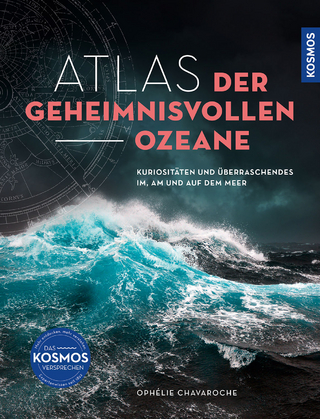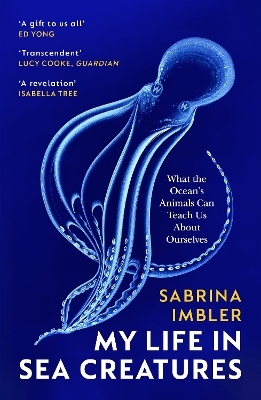
A Blue Carbon Primer
Crc Press Inc (Verlag)
978-1-4987-6909-9 (ISBN)
Key features:
Captures the historic context and recent developments in science and policy arenas that address the potential for coastal wetlands to be considered as significant contributors to carbon sequestration
Links multiple levels of science (biogeochemistry, geomorphology, paleoclimate, etc.) with blue carbon concepts (science, policy, mapping, operationalization, economics) in a single compendium
Concludes with a discussion of future directions which covers integrated scientific approaches, impending threats and specific gaps in current knowledge
Includes 7 case studies from across the globe that demonstrate the benefits and challenges of blue carbon accounting
Written by over 100 leading global blue carbon experts in science and policy.
Blue Carbon has emerged as a term that represents the distinctive carbon stocks and fluxes into or out of coastal wetlands such as marshes, mangroves, and seagrasses. The Blue Carbon concept has rapidly developed in science literature and is highly relevant politically, as nations and markets are developing blue carbon monitoring and management tools and policies. This book is a comprehensive and current compendium of the state of the science, the state of maps and mapping protocols, and the state of policy incentives (including economic valuation of blue carbon), with additional sections on operationalizing blue carbon projects and 7 case studies with global relevance.
Dr. Tiffany Troxler is a wetland ecosystem ecologist and Research Associate Professor in the Southeast Environmental Research Center and Department of Biological Sciences at Florida International University (FIU). Her work includes collaborative research that examines the effects of saltwater inundation on Everglades coastal wetlands to inform management actions, monitoring adaptive management actions associated with Everglades restoration and advancing interdisciplinary nature-based solutions in urban coastal environments. She served as co-editor and contributing author on two IPCC methodological reports that guide national greenhouse gas policy support on land use and land-use change and wetlands while based in Japan with the IPCC Task Force on National Greenhouse Gas Inventories. Tiffany is also founding Director and Director of Science of the Sea Level Solutions Center at FIU, a state university center that focuses on advancing knowledge, decision making and actions toward mitigating the causes and adapting to the effects of sea-level rise. A near native of Florida, she’s lived in Miami for over 20 years. Dr Stephen Crooks is the Principal for Wetland Science and Coastal Management at Silvestrum Climate Associates and a wetland restoration practitioner. As a co-founder of the International Blue Carbon Initiative he has worked with many authors of this volume to pioneer this emerging topic. Steve has been a delegate to UN climate change negotiations since 2010, as a representative of the IPCC in 2013 (Warsaw) and of the French Delegation in 2015 (Paris). He was invited to the UN Climate Summit in 2014 by UN Secretary-General, Ban Ki-Moon. Steve served as a Lead Author of the IPCC 2013 Supplement to the 2006 IPCC Guidelines on National Greenhouse Gas Inventories: Wetlands. For the U.S. he is responsible for translating emerging science on management of coastal wetlands for inclusion within the EPA’s National Greenhouse gas Inventory. Steve is Co-Chair of the Carbon Scientific and Technical Advisory Panel advising the GEF Blue Forests Project assisting country partners in Africa, the Americas and Asia enact blue carbon projects. Dr. Lisamarie Windham-Myers has been a wetland ecologist in the USGS National Research Program for 15 years and is currently a lead scientist for the USGS Hydrological-Ecological Interactions Program, based in Menlo Park, California. Her work focuses broadly on biogeochemistry and ecosystem ecology, with approaches that span landscape-to-molecular scales and single-site to synthesis efforts. Across North America, her research has been funded by multiple federal and state agencies, with sites representing a wide range of salinity and management conditions, from rice agriculture to coastal and restored wetlands. Lisa serves in several local, national and international science advisory efforts to evaluate wetland management and modeling approaches to quantify wetland carbon sequestration, greenhouse gas budgets and/or mercury methylation and export. She has been a federal U.S. representative in multiple international policy efforts to quantify carbon fluxes in coastal ecosystems, including the Commission for Environmental Cooperation and the IPCC.
Introduction. Why BC is important for conservation, restoration, mitigation, adaptation, threats. State of Science. Geomorphology/history/setting and overview of human impacts on BC. Fate of coastal C fluxes in open ocean (allochtonous and eroding marshes). C modelling (physical processes and intercomparison). Whole Marsh Budget (NECB). C accretion rates – method and site differences. Revisit of 2003 compilation on carbon burial rates. Global Warming Potential calculations - GHGs (CH4, N2O). DIC dynamics and carbonate precipitation. Sea Level Rise. State of Mapping. Mangrove approaches/Land cover change and restoration potential. Marsh approaches/Land cover change and restoration potential. Seagrass approaches/Land cover change and restoration potential. ESRI global product. State of Policy. International Policy (REDD, IUCN) – Capacity building/technology transfer/finance/safeguards. UNFCCC/National Accounting. National Policies. Economics (Price vs Value/Social Cost of Carbon). New directions for synergies, i.e., fisheries in ecosystem services. Operationalizing. Methodology for BC accounting. Protocol for BC accounting. Proxies for BC accounting. Management linking mitigation and adaptations. Case Studies. Indonesia (REDD). California Delta (mitigation/adaptation). Abu Dhabi (Policy based, STOCKS). Kenya (project). Waquoit Bay, MA (science). Tampa Bay, FL (demonstration project). Mexico – Redd+, mangroves. Future Directions. Integrating Approaches, Impending Threats, Specific Gaps in Knowledge. Links with green infrastructure and ocean acidification.
| Erscheinungsdatum | 22.11.2018 |
|---|---|
| Reihe/Serie | CRC Marine Science |
| Zusatzinfo | 67 Illustrations, color; 21 Illustrations, black and white |
| Verlagsort | Bosa Roca |
| Sprache | englisch |
| Maße | 178 x 254 mm |
| Gewicht | 1247 g |
| Themenwelt | Naturwissenschaften ► Geowissenschaften ► Hydrologie / Ozeanografie |
| Technik ► Bauwesen | |
| Technik ► Umwelttechnik / Biotechnologie | |
| Weitere Fachgebiete ► Land- / Forstwirtschaft / Fischerei | |
| ISBN-10 | 1-4987-6909-8 / 1498769098 |
| ISBN-13 | 978-1-4987-6909-9 / 9781498769099 |
| Zustand | Neuware |
| Haben Sie eine Frage zum Produkt? |
aus dem Bereich


